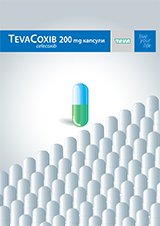Biotechnological Equipment
Advanced search
Article
Biotechnology & Biotechnological Equipment 18 (2), 166 - 176 (2004)
Incidence of pig chlamydiosis in Lithuania revealed by different techniques
J. Bagdonas1, M.Mauricas2, G. Gerulis2, K.Masilionis1, S. Martinov3
- Lithuanian Veterinary Academy, Tilzes str. 18, LT-3022 Kaunas, Lithuania
- Institute of Immunology of Vilnius University, Lithuania
- Central Research Veterinary Medical Institute, Sofia, Bulgaria
Abstract
In 2502 pig blood sera tests from Lithuanian farms anti-chlamydia complement binding (CB) antibodies were detected in 192 cases (7.7%). Serological tests show the following (C type) chlamydia bearing regions: 22.0% Mazeikiai district (2.53±1.06), 17.2% - Kaisiadorys district (2.57±0.63), 13.5% - Panevezys district (1.88±1.04), 12.3% - Vilkaviskis district (1.98±1.5). Rare incidence of the disease was found in Siauliai district 1,2% (1.58±0.00) and Klaipeda district 2.5% (1.58±0.00) farms. The highest antibody titers in blood serum test were found in Joint Stock Company (JSC) “Krekenava” and “Vejine”, i.e. 1:128 and 1:64 (1.44±1.77), respectively.
The lowest levels of these antibodies (1:8) were registered in JSC „Vycia” (1.00±00) and Agricultural Company “Verbunai” (1.58±0.00).
In pigs group with the clinically expressed symptoms 108 pigs infected with chlamydia were detected. Antibody distribution by CB assay, in piglets, sows and boars showed the infection rate from 3.4% to 7.9%. In sows with clinical symptoms the incidence of chlamydiosis was 3.0% greater in comparison with all sows investigated. In piglet the positive reaction of serum was 5 times less. The highest level of Chlamydia infection was in fattening pig group (17.6%).
Seroepizootic study of pig chlamydiosis indicates the different infection rate in the animals investigated. The biggest number of infected pigs was in 1990 (28.7%), then it gradually decreased and in 1995 reached only 10.1% (or decreased by 18.3%). The disease is also season-dependent. The biggest infection risk is in winter (10.4%) and lowest - in summer (2.8%).
The following methods for the study of pig chlamydiosis were used and comparatively evaluated: complement binding reaction (CBR), direct immunofluorescense (DIF), imunoenzyme assay (IEA) indirect immunofluorescense (IIF), micro immunofluorescense (MIF), polymerase chain reaction (PCR) and cell culture (CC) test. PCR method was found to be more sensitive and reliable than that of imunoenzyme assay, but the latter is more economic especially for screaning.


